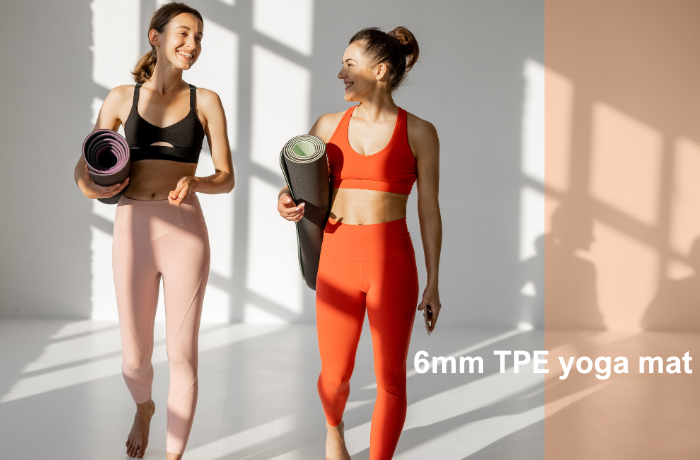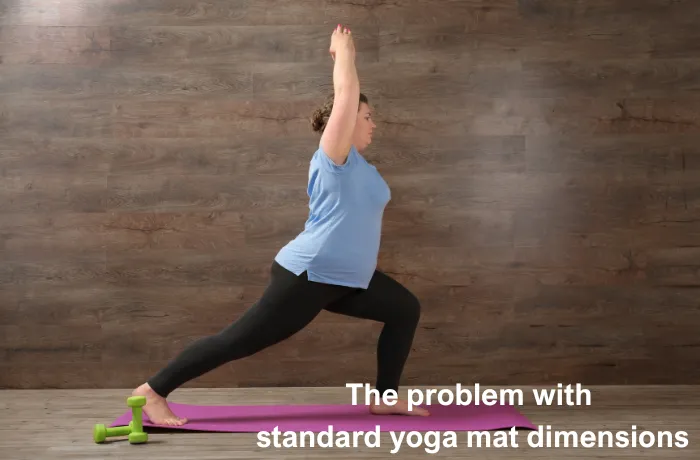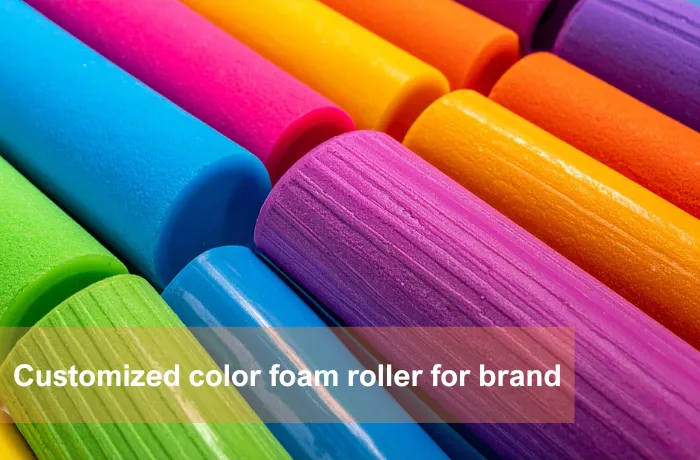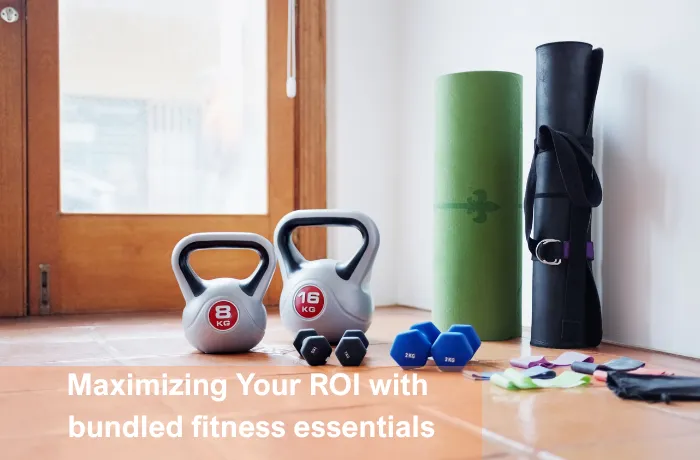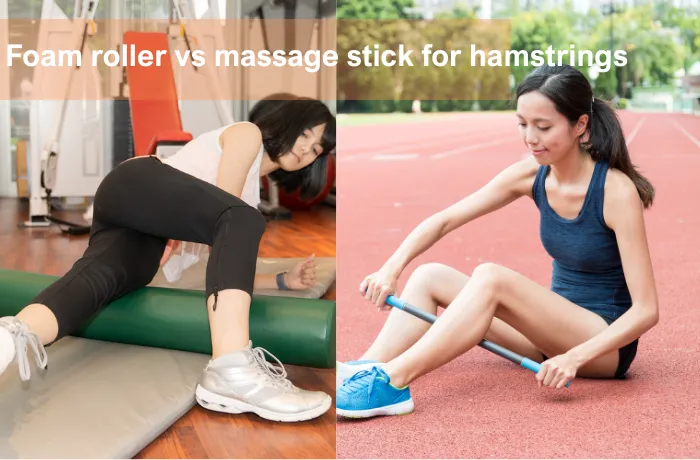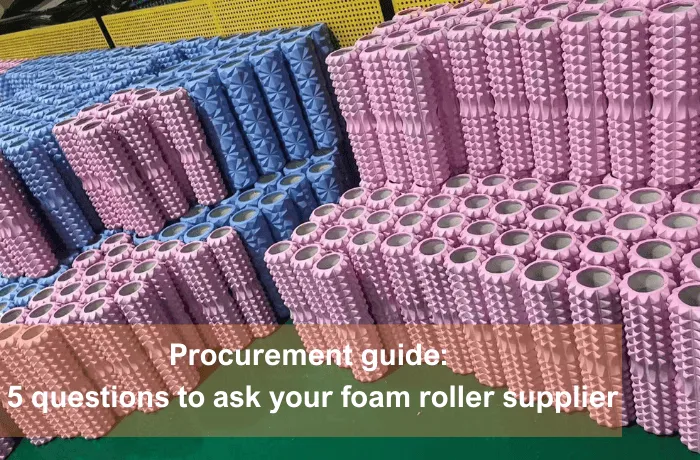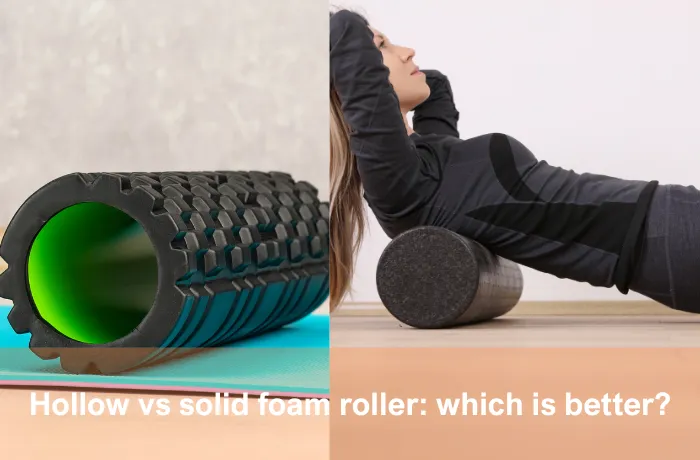Quieres una esterilla que se adapte perfectamente a tus manos y pies. Una esterilla de yoga TPE de 6 mm te ofrece ese punto óptimo de apoyo y comodidad. El material TPE es suave pero resistente, por lo que ofrece suficiente amortiguación para las articulaciones. También tiene una superficie antideslizante que te ayuda a mantenerte estable. A mucha gente le gusta el TPE porque es ecológico y fácil de limpiar.
Principales conclusiones
- La esterilla de yoga TPE de 6 mm proporciona una gran amortiguación. Protege las articulaciones y hace que la práctica sea más cómoda. El material TPE es ligero y más respetuoso con el medio ambiente que el PVC. Es fácil de limpiar y no tiene olores fuertes ni alérgenos. La alfombrilla tiene una superficie texturizada para un buen agarre. Esto ayuda a mantenerse firme, pero los bordes pueden curvarse un poco. La alfombrilla es fácil de transportar y guardar. Por eso es ideal para viajar y practicar yoga a diario. Si la limpias y guardas bien, durará más. Su esterilla se mantendrá fresca y firme durante muchos años.
6 mm Características

Espesor
Cuando pisas una esterilla de yoga de 6 mm, notas la diferencia enseguida. Este grosor proporciona una sensación suave y elástica bajo las manos y los pies. Se obtiene más amortiguación que con las esterillas más finas, lo que ayuda a proteger las rodillas, las muñecas y los codos. Muchos expertos afirman que las esterillas con un grosor de 6 mm o más ofrecen el mejor apoyo para sus articulaciones. Si practicas yoga sobre suelos duros o pasas tiempo en posturas que ejercen presión sobre las articulaciones, agradecerás este acolchado adicional. Los principiantes y las personas con articulaciones sensibles suelen elegir una esterilla de 6 mm por este motivo. Puede que te resulte un poco más difícil mantener el equilibrio sobre una esterilla más gruesa, pero la comodidad suele compensarlo.
Material
TPE significa elastómero termoplástico. Este material es suave y flexible, pero también resistente. La esterilla es ligera y fácil de transportar. El TPE no necesita productos químicos adicionales para ser estable, por lo que es menos contaminante que el PVC.. Tampoco contiene látex, lo que es una buena noticia si eres alérgico. A diferencia de algunas esterillas, el TPE no tiene un olor fuerte. Se limpia fácilmente con agua y jabón. A continuación te mostramos cómo se compara el TPE con otros materiales habituales para esterillas de yoga:
| Material | Características principales |
|---|---|
| TPE | Ligero, reciclable, no tóxico, fácil de limpiar, resistente a las bacterias, sin olor |
| PVC | Duraderas, baratas, pero menos ecológicas, difíciles de reciclar, pueden liberar toxinas |
| Caucho natural | Biodegradable, buen agarre, pero pesa y tiene un olor fuerte |
| EVA | Ligero, flexible, pero puede aplastarse y tiene olor químico |
Confort
Quieres que tu esterilla de yoga te haga sentir bien cada vez que practiques. Una esterilla de TPE de 6 mm ofrece una superficie afelpada que amortigua el cuerpo. Esto es especialmente útil en estilos más lentos como el Yin o el yoga restaurativo, en los que se mantienen las posturas durante más tiempo. Muchos usuarios dicen que sus rodillas y muñecas se sienten mejor en una esterilla más gruesa. Puedes notar que las posturas de equilibrio se tambalean un pocoPero para la mayoría de la gente, la comodidad merece la pena. Si tienes las articulaciones sensibles o simplemente quieres un tacto más suave, un La alfombrilla de 6 mm es una gran elección.
Consejo: Si haces muchas posturas de pie o en equilibrio, prueba varias colchonetas en persona para ver qué grosor te sienta mejor.
Portabilidad
No querrás que tu esterilla sea una molestia de transportar. Las esterillas de TPE son mucho más ligeras que las de goma, incluso con 6 mm de grosor. Puedes enrollarlas fácilmente y meterlas bajo el brazo o en una bolsa de yoga. Algunas esterillas de TPE son incluso plegables, por lo que caben en una maleta. El sitio La estructura de celdas cerradas impide la entrada de agua y sudorLa esterilla se mantiene fresca y sin olores. Puedes limpiarla rápidamente después de la clase y se seca con rapidez. Si viajas o vas a clase a menudo, te resultará fácil llevarte una esterilla de TPE de 6 mm.
- Ligero para facilitar su transporte
- Se enrolla o pliega para guardarla
- Resistente al agua y rápido de limpiar
- Se mantiene fresco y sin olores
Beneficios
Protección conjunta
Quieres que tu esterilla de yoga cuide tus articulaciones. Una esterilla con amortiguación extra te ayuda a sentirte cómodo, sobre todo si tienes rodillas, muñecas o caderas sensibles. Según los expertos las alfombrillas de mayor grosor protegen mejor las articulaciones. La superficie blanda absorbe los impactos y distribuye el peso uniformemente. Esto significa menos tensión en las articulaciones cuando te mueves o mantienes posturas. Muchas personas que practican en suelos duros o necesitan un apoyo adicional eligen una esterilla más gruesa por este motivo. Si eres una persona mayor, te estás recuperando de una lesión o te gustan los estilos de yoga más lentos, notarás la diferencia. La esterilla se mantiene estable y con agarre, aunque parezca blanda. Podrás disfrutar de tu práctica sin preocuparte por las articulaciones doloridas.
Nota: Las esterillas más gruesas pueden resultar menos estables en las posturas de equilibrio, pero la comodidad para las articulaciones merece la pena para muchas personas.
Agarre
Necesitas una esterilla que te mantenga firme. Las esterillas de TPE tienen una superficie texturizada que ayuda a mantener las manos y los pies en su sitio. Esto es importante cuando haces posturas como el Perro Boca Abajo o la Plancha. Sin embargo, es posible que notes que estas esterillas a veces se enroscan en los bordes. Esto puede hacer que la esterilla se mueva un poco en el suelo, lo que puede afectar a tu equilibrio. El tacto esponjoso es agradable, pero puede ejercer una presión adicional en las muñecas en algunas posturas. Así es como las esterillas de TPE se comparan con otras en cuanto a agarre:
- Las colchonetas de TPE son ligeras y acolchadas, pero pueden rizarse y moverse durante la práctica.
- La superficie esponjosa puede causar tensión en la muñeca en posturas en las que se soporta peso.
- Las alfombrillas de caucho natural ofrecen mejor agarre y estabilidad, pero son más pesadas y pueden oler mal al principio.
- Las alfombrillas de goma permanecen planas y firmes, lo que las convierte en una buena opción de agarre y seguridad.
Si quieres una alfombrilla fácil de transportar y de tacto suave, el TPE es una buena opción. Si necesitas el mejor agarre y estabilidad, quizá prefieras una alfombrilla de goma.
Respeto del medio ambiente
Puede que te preocupes por el medio ambiente a la hora de elegir tu esterilla de yoga. Las alfombrillas de TPE son mejores para el planeta que las de PVC. No contienen tantas sustancias químicas tóxicas y se pueden reciclar triturándolas o fundiéndolas para fabricar nuevos productos. Sin embargo, las alfombrillas de TPE no son biodegradables. Si se calientan, pueden liberar sustancias químicas nocivas. El proceso de fabricación de las esterillas de TPE es menos nocivo que el de los plásticos tradicionales, pero sigue teniendo algunos efectos negativos. Algunas alfombrillas etiquetadas como TPE pueden estar fabricadas con otros materiales, como PEVA.lo que puede ser mejor para el medio ambiente. No siempre es fácil saber con exactitud de qué está hecha la alfombrilla, por lo que conviene consultar al proveedor si se quiere estar seguro.
Consejo: las alfombrillas de TPE son una opción mejor que el PVC para el medio ambiente, pero no son perfectas. Busque siempre información clara sobre el producto.
Limpieza fácil
Quieres que tu alfombrilla se mantenga fresca y limpia. Las esterillas de TPE te lo ponen fácil. Puede límpialos con un paño húmedo o con agua y jabón suave. Esto elimina rápidamente la suciedad, el sudor y cualquier olor. No necesita limpiadores especiales ni mucho tiempo. La alfombrilla se seca rápidamente, por lo que puede volver a utilizarla poco después de limpiarla. En comparación con las alfombrillas de goma, las de TPE son mucho más fáciles de cuidar. Las alfombrillas de goma necesitan una limpieza suave y pueden estropearse con limpiadores fuertes. Con el TPE, pasará menos tiempo limpiando y más practicando.
- Limpiar con un paño húmedo o con agua y jabón suave.
- Elimina fácilmente la suciedad, el sudor y el olor.
- Una limpieza sencilla mantiene su alfombrilla higiénica y lista para usar.
- Las alfombrillas de goma necesitan una limpieza más cuidadosa y pueden ser más difíciles de mantener.
Mantener la esterilla limpia te ayuda a disfrutar de la práctica y a que dure más tiempo.
¿Quién debe utilizarlo?
Principiantes
Si acabas de iniciar tu andadura en el yoga, querrás una esterilla que te facilite las cosas y te resulte cómoda. Una esterilla con el grosor adecuado te proporciona apoyo y te ayuda a aprender nuevas posturas sin preocuparte por el dolor de las articulaciones. Muchos principiantes encuentran que una esterilla con amortiguación extra protege sus rodillas, muñecas y codos. También es recomendable una esterilla que se mantenga en su sitio y te ayude a mantener el equilibrio. Algunas esterillas incluso tienen líneas de alineación, que guían las manos y los pies para que puedas practicar con confianza.
He aquí un rápido vistazo a lo que hace que estas colchonetas sean ideales para principiantes:
| Característica | Ventajas para los principiantes |
|---|---|
| Superficie acolchada | Reduce la tensión en las articulaciones y absorbe los impactos |
| Agarre fuerte | Evita resbalones y ayuda a mantener las posturas |
| Líneas de alineación | Guía la colocación de manos y pies para mejorar la forma |
| Ligero y plegable | Fácil de llevar a clase o guardar en casa |
| Ecológico y duradero | Es bueno para el medio ambiente y dura mucho tiempo |
| Opiniones positivas de los usuarios | Muchos usuarios elogian el agarre, la comodidad y la facilidad de limpieza |
Podrás concentrarte en tu práctica y disfrutar aprendiendo nuevas posturas sin distracciones.
Profesionales avanzados
Si practicas yoga desde hace tiempo, ya sabes lo que necesitas de una esterilla. Puede que quieras una esterilla que te proporcione comodidad y estabilidad. Algunas posturas avanzadas requieren una base estable, por lo que tal vez prefieras una esterilla que no se mueva. Una esterilla con una superficie texturizada te ayuda a mantener el agarre, incluso cuando sudas. También puedes buscar una esterilla que sea fácil de limpiar después de sesiones intensas. Muchos yoguis experimentados eligen esterillas que equilibran la amortiguación con la firmeza, para que puedas fluir por las posturas con facilidad.
Consejo: prueba diferentes esterillas para ver cuál se adapta mejor a tu estilo y necesidades. Tu práctica se sentirá mejor cuando encuentres la más adecuada.
Preocupaciones conjuntas
Si tiene articulaciones sensibles o afecciones como la artritis, necesita una esterilla que anteponga su comodidad. Los profesionales de la salud suelen recomendar esterillas con grosor medioalrededor de 6 mmpara personas con dolores articulares. Estas esterillas amortiguan las rodillas y las muñecas, haciendo que las posturas sean más cómodas. Consigues suficiente apoyo sin perder estabilidad.
- Las alfombrillas ligeras de gran elasticidad ofrecen un mejor apoyo articular que las de PVC.
- Las esterillas de entre 5 mm y 8 mm de grosor funcionan bien para el dolor de rodilla.
- Para apoyar la muñeca, una esterilla de 6 mm es una buena elección.
- Las personas con artritis suelen sentirse mejor en colchonetas de entre 5 mm y 10 mm de grosor.
- Las esterillas más gruesas ayudan durante las posturas que ejercen presión sobre las articulaciones, pero pueden resultar menos estables.
- Piensa siempre en tus propias necesidades y habla con un profesional sanitario o un profesor de yoga si no estás seguro.
Puedes disfrutar de tu práctica y proteger tus articulaciones al mismo tiempo.
6 mm frente a otras alfombrillas
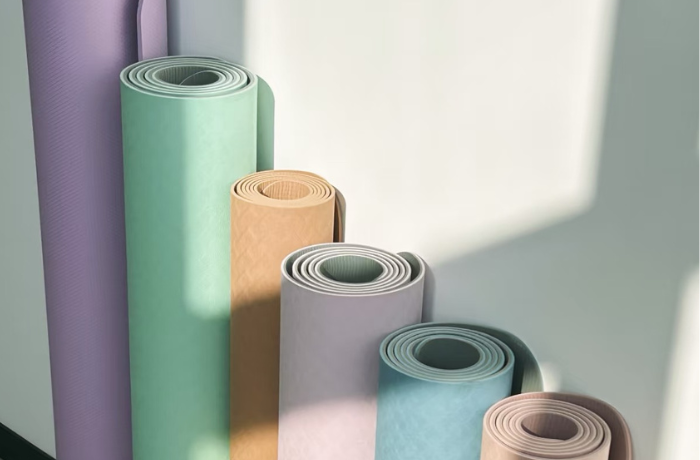
PVC
Es posible que veas alfombrillas de PVC por todas partes porque duran mucho y cuestan menos. Las alfombrillas de PVC son resistentes y pueden soportar años de uso diario. Suelen durar entre cinco y diez años. Sin embargo, el PVC no es bueno para el medio ambiente. No se descompone y puede liberar toxinas. Las alfombrillas de PVC son más pesadas que las de TPE, por lo que no conviene llevarlas a todas partes. Ofrecen un buen agarre y se recuperan de las abolladuras, pero no son tan blandas como las alfombrillas de TPE de 6 mm.
| Material | Nivel de durabilidad | Vida útil típica | Notas sobre durabilidad y rendimiento |
|---|---|---|---|
| PVC | Alta | 5-10 años | Muy duradero, resiliencia sintética, puede abollarse pero se recupera |
| TPE (6 mm) | Media a alta | 1-5 años | Más respetuoso con el medio ambiente, resistente, rebota más rápido que el PVC, resiste mejor la deformación |
| Caucho natural | Alta | 4-8 años | Muy duradero, excelente rebote, pero se degrada más rápido bajo la luz solar |
| EVA | Medio | 1-3 años | Menos duradero que el PVC o el caucho, menor vida útil |
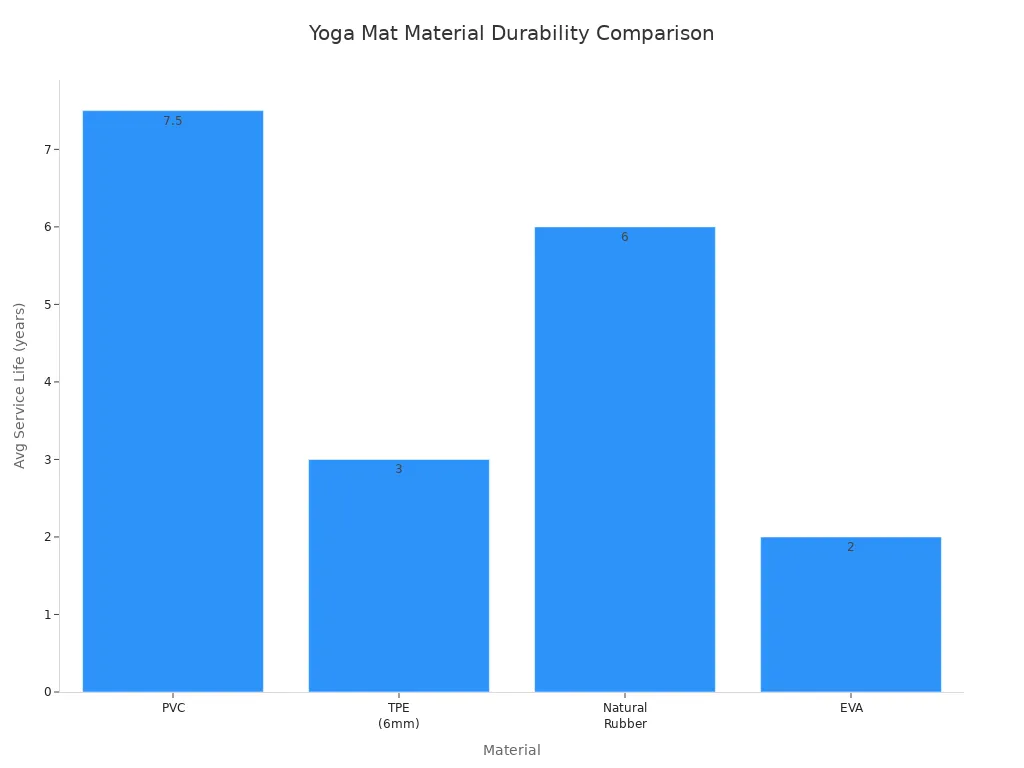
Goma
Las esterillas de caucho natural son resistentes y ofrecen un gran agarre, incluso cuando están mojadas. No necesitas una toalla para hacer yoga en caliente porque la esterilla se mantiene adherente. Las esterillas de caucho duran entre cuatro y ocho años y resisten el desgaste. Son más pesadas que las esterillas de TPE, por lo que transportarlas puede suponer un esfuerzo. Las esterillas de goma se estropean más rápido con la luz solar, pero son biodegradables y ecológico. Algunas personas notan un fuerte olor a goma al principio, pero se desvanece.
Consejo: Si sudas mucho o practicas yoga caliente, una esterilla de goma te da la mejor agarre y resistencia a la humedad.
EVA
Las esterillas de EVA son suaves y ligeras. Se pueden llevar a todas partes, pero no duran tanto como otras esterillas. La mayoría de las esterillas de EVA se desgastan en uno o tres años. Ofrecen una buena amortiguación, pero no son tan ecológicas como el TPE o el caucho. Las esterillas de EVA pueden aplanarse con el tiempo y no ofrecer el mismo apoyo que una esterilla de TPE de 6 mm. Son fáciles de limpiar y se secan rápidamente, pero no ofrecen el mismo agarre que el caucho o el TPE.
Alfombrillas más finas
Las esterillas más finas, como las de 3 ó 4 mm de grosor, te ayudan a sentirte firme y cerca del suelo. Te pueden gustar si practicas estilos de yoga rápidos o con mucho equilibrio. Estas esterillas son ligeras y fáciles de transportar. Sin embargo, no proporcionan mucha amortiguación, por lo que tus articulaciones pueden sentirse doloridas después de largas sesiones. Las esterillas más finas se desgastan más rápido si las usas mucho.
| Aspecto | Esterillas de yoga TPE de 6 mm (más gruesas) | Alfombrillas más finas (3 mm-4 mm) |
|---|---|---|
| Amortiguación | Mayor sujeción de las articulaciones, ideal para estilos de yoga suaves | Menos amortiguación, puede no ser adecuado para articulaciones sensibles |
| Estabilidad y equilibrio | Puede reducir la estabilidad de los estilos dinámicos | Mejor para el equilibrio y el movimiento activo |
| Confort | Más cómodo para posturas prolongadas | Menos comodidad para las articulaciones |
| Portabilidad | Menos portátil, más pesado | Muy portátil, fácil de transportar |
| Durabilidad | Durabilidad moderada | Puede desgastarse más rápido |
| Estilos de yoga recomendados | Yoga restaurativo, yin y terapéutico | Vinyasa, Power, Hot yoga |
Alfombrillas más gruesas
Las alfombrillas más gruesas, como las de más de 8 mm, ofrecen aún más acolchado. Puede que te interese si tienes articulaciones muy sensibles o necesitas más comodidad. Sin embargo, estas colchonetas pueden dificultar el equilibrio y son voluminosas de transportar. Puede que no duren más que una esterilla de 6 mm, sobre todo si las utilizas para estilos de yoga activos. Las esterillas más gruesas son más adecuadas para el yoga suave o terapéutico.
Nota: las esterillas de TPE ofrecen una buena combinación de comodidad y respeto por el medio ambiente, pero pueden desgastarse más rápido que las de PVC o caucho si se practican a diario.
Elegir una alfombrilla de 6 mm
Talla
Quieres una esterilla que se adapte a tu cuerpo y a tu estilo de vida. Muchas esterillas de 6 mm, como la esterilla multifunción ECO, ofrecen funciones inteligentes para ayudarte. Puede dobla esta alfombrilla hasta 12 vecespara que quepa en el bolso o la maleta. La esterilla pesa sólo 0,36 kg, lo que facilita su transporte a cualquier parte. Este tamaño y peso funcionan bien si viajas a menudo o necesitas guardar la esterilla en un espacio reducido. Tiene un acolchado grueso para mayor comodidad, pero sin renunciar a la portabilidad.
- Plegable para facilitar el embalaje
- Ligero para viajar
- Suficientemente grueso para mayor comodidad durante las largas presas
Si te gustan los estilos de yoga tranquilos o necesitas una esterilla para diferentes actividades, este tamaño te ofrece flexibilidad.
Textura
La superficie de tu esterilla importa mucho. Una esterilla con textura te ayuda a mantenerte firme, incluso cuando sudas. La esterilla de yoga TPE de 6 mm tiene una superficie especial que te proporciona un agarre seguro. Podrás mantener las posturas sin resbalarte ni preocuparte por las lesiones. Este agarre te permite concentrarte en la respiración y el movimiento. La esterilla también es suave para las manos y los pies, por lo que te sentirás cómodo durante toda la sesión.
- Superficie texturizada para un mejor agarre
- Reduce los resbalones y las lesiones
- Tacto suave para mayor comodidad
Obtendrá lo mejor de ambos mundos: seguridad y comodidad.
Durabilidad
Quieres que tu esterilla dure. Las esterillas de TPE ofrecen una buena durabilidad, sobre todo si las utilizas para yoga suave o moderado. El material resiste el desgaste y mantiene su forma, incluso después de muchos usos. Si la doblas o enrollas a menudo, la esterilla rebota sin agrietarse. Puedes limpiarla fácilmente, lo que ayuda a que se mantenga fresca y dure más. Para la práctica diaria e intensa, es posible que notes cierto desgaste con el tiempo, pero para la mayoría de la gente, una esterilla de TPE de 6 mm ofrece un rendimiento fiable.
Precio
El precio es importante a la hora de elegir una esterilla. Las alfombrillas de TPE suelen costar menos que las de caucho natural, pero más que las básicas de PVC o EVA. Pagas por ser respetuosa con el medio ambiente, cómoda y fácil de cuidar. Si quieres una alfombrilla que equilibre calidad y valor, una alfombrilla de TPE de 6 mm es una elección inteligente. Obtendrá buenas prestaciones sin gastar demasiado.
Consejo: Busca rebajas o paquetes si quieres ahorrar dinero en tu próxima esterilla.
Consejos de cuidado
Limpieza
Quieres que tu esterilla se mantenga fresca y segura en cada sesión. Las esterillas de TPE son fáciles de limpiar. Después de cada uso, limpia la esterilla con un paño húmedo. Utiliza una solución jabonosa suave si observas suciedad o marcas de sudor. Evita los productos químicos agresivos o las esponjas ásperas. Pueden dañar la superficie blanda y reducir el agarre. Para una limpieza más profunda, lave la alfombrilla una vez al mes con limpiadores suaves y naturales. Deje siempre que la alfombrilla se seque al aire completamente antes de enrollarla. Así se evita la formación de moho.
Consejo: Limpie la alfombrilla con regularidad para mantenerla higiénica y prolongar su vida útil.
Almacenamiento
Un almacenamiento adecuado mantiene tu esterilla en plena forma. A continuación te explicamos cómo proteger tu esterilla de yoga TPE de 6 mm:
- Deje que su estera secar completamente al aire después de la limpieza.
- Guárdelo en un lugar fresco y seco, alejado de la luz solar directa.
- Enrolle la alfombrilla sin apretarla en lugar de doblarla. Así evitarás arrugas y daños permanentes.
- Utiliza una bolsa o correa transpirable para la esterilla de yoga. Esto permite que escape cualquier resto de humedad.
- Mantén la alfombrilla alejada de objetos punzantes que puedan provocar desgarros.
- No pongas objetos pesados encima de la esterilla. Así evitarás aplastar o deformar el material.
Un poco de cuidado hace mucho. Tu esterilla se mantendrá suave, elástica y lista para tu próximo entrenamiento.
Longevidad
Quieres que tu alfombrilla dure lo máximo posible. Las esterillas de TPE de alta calidad pueden servirle durante de dos a cinco años con los cuidados adecuados. Las alfombrillas más baratas pueden desgastarse antes. Lo más importante es cómo trates tu esterilla. Enróllala siempre sin apretar o guárdala plana. Manténgala alejada del calor y la luz solar, ya que pueden debilitar el material. Evite utilizar productos de limpieza agresivos o frotar con demasiada fuerza. Una limpieza suave y un almacenamiento cuidadoso ayudan a que la esterilla mantenga su agarre y soporte. Los fabricantes utilizan técnicas avanzadas y materiales sostenibles para que las alfombrillas duren más, pero tus hábitos diarios marcan la mayor diferencia.
Cuida tu esterilla y ella cuidará de ti.
Una esterilla de yoga TPE de 6 mm le ofrece comodidad, apoyo y fácil cuidado. Obtendrá una gran protección para las articulaciones y una esterilla lo suficientemente ligera como para llevarla a cualquier parte. Si eres principiante, tienes problemas en las articulaciones o quieres una sensación de suavidad, esta esterilla es perfecta para ti. Piensa en tu estilo de práctica y en lo que más te importa. Si puedes, prueba varias esterillas. Encontrarás la que mejor se adapte a tu práctica de yoga.
PREGUNTAS FRECUENTES
¿Cómo limpio mi esterilla de yoga TPE de 6 mm?
Puedes limpiar la esterilla con un paño húmedo y un poco de jabón neutro. Déjala secar al aire antes de enrollarla. Evita los productos de limpieza agresivos. Tu esterilla se mantendrá fresca y durará más.
¿Puedo utilizar una esterilla de TPE de 6 mm para Pilates o estiramientos?
Sí que puedes. La amortiguación adicional es ideal para Pilates, estiramientos o incluso ejercicios sencillos en el suelo. Obtendrá comodidad y apoyo para todo tipo de movimientos.
¿Resbalará mi alfombrilla en suelos de madera o baldosas?
Las alfombrillas de TPE tienen una superficie antideslizante. La mayoría se mantienen en suelos lisos. Si notas que resbalan, prueba a colocar una toalla debajo. Esto te dará más agarre y confianza.
¿Es adecuada una esterilla de TPE de 6 mm para el yoga caliente?
Puedes utilizarla para hacer yoga con calor, pero es posible que sudes más. La esterilla es resistente al agua, pero puede que quieras poner una toalla encima para mayor agarre. Esto te ayuda a mantenerte firme durante las sesiones sudorosas.
¿Cuánto dura una esterilla de yoga TPE de 6 mm?
Si la cuidas bien, tu alfombrilla puede durar entre dos y cinco años. Límpiala a menudo y guárdala protegida de la luz solar. Si practicas a diario, puede que la notes desgastada antes, pero un uso suave la mantendrá fuerte.

